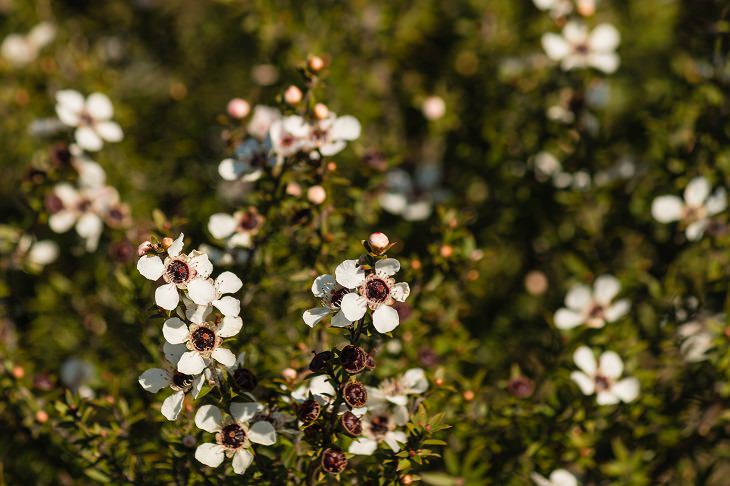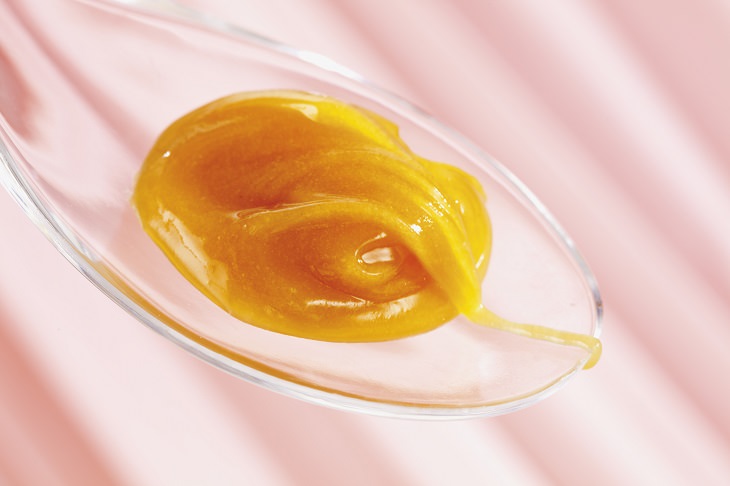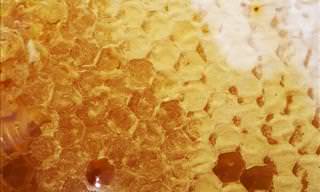
Honey was regularly used to treat a wide range of ailments, from eye and throat infections to gastroenteritis and respiratory ailments, but it was persistently popular as a treatment for wound and skin infections.
With the advent of modern antibiotics in the mid-20th century, the use of honey as a medicinal substance decreased. In fact, Western medicine largely dismissed it as a worthless but harmless substance. However, the emergence of superbugs (pathogens that are resistant to some, many, or even all antibiotics) means alternative approaches to dealing with pathogens are being scientifically investigated.
We now understand that the traditional popularity of honey as a wound dressing is due to its antimicrobial properties. Its high sugar content and low pH means that honey inhibits microbial growth, but certain kinds of honey still retain their antimicrobial activity when they are diluted to negligible levels.
Many different types of honey also produce microbe-killing levels of hydrogen peroxide when glucose oxidase (an enzyme incorporated into the honey by bees) reacts with glucose and oxygen molecules in water. Therefore, when honey is used as a dressing, it draws moisture from the tissues. This reacts to produce hydrogen peroxide, cleaning any infection from the wound.
The antimicrobial powers of different kinds of honey vary greatly, depending on which flowers the bees have collected their nectar from. While all honey types possess some sort of antimicrobial activity, certain ones are up to 100 times more active than others.
How is manuka different to other honey?

Manuka honey comes from the nectar of manuka trees, and it has an additional component to its potent antimicrobial activity. This was discovered by Professor Peter Molan in the 1980's when he realized the action of manuka honey remained even after hydrogen peroxide was removed.
The cause of this activity remained elusive for years until two laboratories independently identified methylglyoxal (MGO) as a key active component in manuka honey back in 2008. MGO is a substance that occurs naturally in many plant and animal cells and it has antimicrobial properties.
Can manuka honey kill superbugs?
The power of manuka honey has been tested against a diverse range of microbes, particularly those that cause wound infections, and it has been found to inhibit problematic bacterial pathogens, including superbugs that are resistant to multiple antibiotics. It can also kill bacteria living in biofilms (communities of microbes notoriously resistant to antibiotics).
Crucially, there are no reported cases of bacteria developing resistance to honey, nor can manuka or other honey resistance be generated in the laboratory. However, it’s important to note that the amount of MGO in different manuka honeys varies, and not all manuka honeys have high levels of antimicrobial activity.
Manuka honey and wound healing
Apart from its antimicrobial activity, honey is also non-toxic to mammalian cells, helps to maintain a moist wound environment, reduces healing time, has anti-inflammatory properties, has a natural debriding action, and reduces wound odor. These properties are why honey makes such an effective wound dressing.
Honey, and in particular manuka honey, has been used to treat infected and non-infected wounds, burns, leg ulcers, traumatic injuries, gingivitis, lesions, pressure sores, and surgical incisions.
What about eating manuka honey?

Manuka may inhibit the bacteria that cause a sore throat or gingivitis, but the main components responsible for the antimicrobial activity won’t survive the digestion process. Nevertheless, honey consumption can have other therapeutic benefits, such as anti-oxidant, prebiotic, and anti-inflammatory properties.
What doesn’t it do?
There’s a common misconception that eating manuka honey will help with hay fever because it contains small doses of the pollen that causes the symptoms, enabling your immune system to learn to tolerate it. However, there’s no scientific evidence of this. In fact, most of the pollen that causes hay fever comes from plants that are wind pollinated, so they don’t produce nectar and are not visited by bees.
There’s some preliminary work that shows that honey might be able to protect from some side effects of radiation treatment to the head and neck, but further investigation is warranted. Other claims that honey has anti-cancer properties need to be substantiated.
Furthermore, there isn’t any robust evidence that manuka honey lowers cholesterol, improves sleep, or treats diabetes. However, one very interesting study did show that honey was more effective than cough medicine for reducing nighttime coughs in children. Manuka honey wasn’t specifically used, but it may well be as helpful.
Claims that manuka honey helps the body to detox are innately ridiculous, and the cosmetic and anti-aging claims about it are scientifically unfounded.
Final verdict
If you’re buying manuka honey for general daily use as a food or tonic, there’s no need to buy the more active and more expensive types. However, if you’re using it to treat wounds or skin infections, it should be active, sterile, and appropriately packaged as a medicinal product.
The best way to ensure this is to check if the product has a CE mark or is registered with the Australian Therapeutic Goods Administrations (marked with an AUST L/AUST R number).
Manuka honey isn’t a superfood, but it’s grossly underutilized as a topical treatment for burns, ulcers, and wounds.
Source: sciencealert
Images: depositphotos
 Go to BabaMail
Go to BabaMail



























